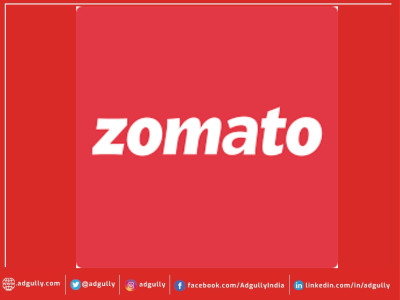How programmatic CTV media buying is changing the face of advertising
In today’s fast-paced digital age, the advertising landscape is witnessing a significant shift as consumers increasingly turn to digital mediums and streaming services. Advertisers and media buyers are swiftly adapting their strategies to leverage programmatic CTV media buying, recognising its potential to reach targeted audiences, offer better ROI, and provide greater insights and control over ad spends.
In this special report, Adgully delves into the evolving strategies of advertisers and media buyers, the potential disruptions and transformations in the advertising and broadcasting industries, and the importance of data-driven decision-making in the programmatic CTV ecosystem.
Amitt Sharma, CEO, VDO.AI, observed that advertisers and media buyers are embracing programmatic CTV media buying with a strong focus on audience data and advanced targeting techniques. “With advertisers switching to interactive and engagement-driven CTV ads for better Return on Advertising Spend (ROAS), the shift towards programmatic CTV has the potential to disrupt and transform the broader advertising and broadcasting industries. If we talk about our brand, we’re integrating QR codes along with an immersive content gallery to enable the Screen2Screen feature and generate augmented engagement,” he added.
Sharma further said, “As more advertisers allocate budgets to programmatic CTV for its targeted and measurable advantages, traditional TV advertising could face challenges. These challenges stem from issues like non-transparency, the availability of less real-time data and insights, and the increasing shift towards digital consumption. This transition may also lead to an increased demand for talent with expertise in data analytics and programmatic advertising. Additionally, the industry might witness the emergence of new advertising models, increased competition, and a more dynamic and personalised advertising landscape in the upcoming years.”
The adoption of programmatic models has brought about a transformation in media agencies. While pointing out that traditional roles in media agencies are evolving, Santosh Ghosh, Head - Digital Strategy, Investment & Advisory, Tencom Ventures, said, “Traditionally, clients sought media agencies for their expertise in media planning and buying. However, with the advent of programmatic advertising, the human involvement in purchasing specific media or content has significantly decreased. Instead, planners and traders now primarily focus on selecting audiences based on client-defined parameters, while the actual buying and optimisation processes are efficiently handled by automated systems like DSPs (Demand-Side Platforms), SSPs (Supply-Side Platforms), or DMPs (Data Management Platforms).”
“This technological advancement is gradually rendering traditional media planning and buying roles obsolete, leading to a transformation of agencies into leaner structures, potentially staffed with lower-salaried resources primarily focused on operational management and acting as KPOs (Knowledge Process Outsourcing) for clients,” he added.
Continuing further, Ghosh said, “For brands, this paradigm shift offers greater control over their advertising budgets, as analytics-driven by machines result in increased efficiency and better returns on investment.”
However, a concern arises with the concentration of power within the ecosystem, pointed out Ghosh, adding, “Currently, Google’s DV360 is regarded as a trustworthy DSP, thanks to its extensive inventory pool and robust analytics capabilities. While this benefits advertisers and agencies, it also raises apprehensions about potential monopolistic tendencies. With the Indian advertising business continually growing, an overreliance on one or a few dominant tech players may not foster a healthy competitive environment. The hope lies in the emergence of newer platforms that can challenge Google’s monopoly and provide a more diverse and competitive landscape.”
Nikhil Kumar, Vice President, In, SEA & ME at Mediasmart, highlighted, “Brands are harnessing the power of technology to embrace programmatic buying and unlock greater advertising potential through enhanced segmentation, personalisation, and measurability. On the supply side too, more publishers are now programmatically available through SSPs making the ecosystem more accessible to integrate programmatic into television advertising via CTV. The programmatic technology on CTV has made advertising on television more data-driven, automated, and scalable with the promise of targeting and measurability.”
He further said, “On CTV, we’re already witnessing the enthusiasm among brands to integrate CTV within their budgets for better engagement, ad recall, and brand lift. Furthermore, integrating with proprietary tech like Household Sync offered by mediasmart helps brands to leverage CTV to target viewers in the same household. By nudging users on mobile within 24 hours of being exposed to ads on CTV, advertisers are also opening up newer ways to engage with their consumers and build an efficient channel for omnichannel targeting.”
Mikhil Kumar added, “With the growth and adoption of AVOD models on OTT, a growing OTT universe of apps, and higher penetration of internet-enabled Smart TVs, CTV landscape, the rise of programmatic media buying will likely challenge the status quo in the broadcasting industry as well.”
Krishna Menon, Chief Operating Officer, QYOU Media India, noted that programmatic CTV is a relatively new market with several new players entering the space.
He said, “The growth of programmatic CTV media buying in India suggests that it is going to become a major force in the advertising industry in the country. As more viewers shift to streaming platforms, advertisers will need to find ways to reach them there. The shift to programmatic CTV media buying is likely to lead to increased competition, lower prices, and new ad formats. However, it is also likely to open up new opportunities for advertisers and broadcasters to reach new audiences and measure the effectiveness of their campaigns more accurately.”
As the popularity of CTV and streaming services rise, and advertisers allocate more budget to leverage this trend, Nachiket Deole, Head Of Sales - India, DoubleVerify, notes that there has been a global increase of 69 percent in bot fraud across CTV in 2022.
He noted, “To address concerns over quality infractions and fraudulent activities like bot fraud, advertisers globally are implementing multi-layered verification strategies, utilising tools like DV’s Video Filtering, which saw a 72% YoY increase in CTV video filter rate. Active protection across CTV campaigns would be important for advertisers in India to take note of to ensure that their media investments are not going to waste.”
Additionally, he added, “Data-driven decision-making plays a pivotal role as advertisers tap into insights to understand consumer behaviour, preferences, and engagement metrics, enabling them to optimise ad campaigns and effectively reach their desired audiences. This calls for the need for measurement of viewability on CTV, because an ad does not reach its full potential if it is never seen in the first place.”
Deole continued, “As more advertisers move towards investing media budgets into CTV platforms, the broader advertising and broadcast industries will need to consider the factors relating to this. For example, apart from the fact that consumers are moving to such channels, a key driver of growth in digital advertising is the ability to garner insights across digital channels. If traditional platforms are able to innovate and move quickly with the evolving audience needs, they may still be able to retain and capture audience attention.”


















Share
Facebook
YouTube
Tweet
Twitter
LinkedIn